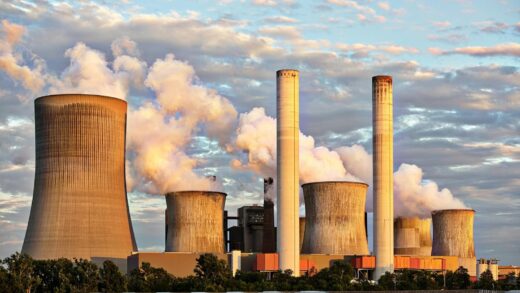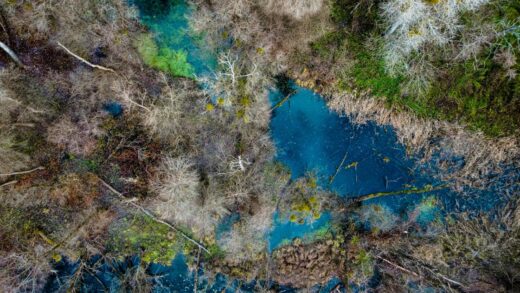Climate change, a result of rising global temperatures due to human activities, is one of the most pressing environmental challenges of our time. The consequences of climate change are far-reaching, affecting ecosystems across the planet. These changes not only disrupt biodiversity but also pose significant risks to human communities that depend on the stability of these ecosystems. This article explores the various impacts of climate change on global ecosystems, highlighting the urgent need for action to mitigate its effects.
Understanding Climate Change and Its Causes
At its core, climate change is driven by the accumulation of greenhouse gases (GHGs) in the atmosphere, such as carbon dioxide, methane, and nitrous oxide. These gases trap heat from the sun, leading to a rise in global temperatures—a phenomenon known as the greenhouse effect. Human activities, including fossil fuel combustion, deforestation, and industrial processes, have significantly increased GHG emissions since the Industrial Revolution.
The effects of this warming are already evident: glaciers are melting, sea levels are rising, and extreme weather events are becoming more frequent. These changes profoundly impact ecosystems that have evolved to thrive within specific temperature and environmental conditions.
The Effects of Climate Change on Ecosystems
1. Habitat Disruption and Biodiversity Loss
One of the most visible impacts of climate change is the disruption of natural habitats. As temperatures rise, species are forced to migrate to more suitable environments, often resulting in the loss of biodiversity. For instance, polar bears and other Arctic species face habitat loss as sea ice melts, threatening their survival.
Similarly, coral reefs, which support a diverse range of marine life, are suffering from coral bleaching due to rising ocean temperatures and acidification. These changes not only endanger individual species but also compromise the stability of entire ecosystems that rely on them.
2. Altered Ecosystem Dynamics
Climate change disrupts the balance within ecosystems. Changes in temperature and precipitation patterns affect the availability of resources such as water and food. For example, forests are experiencing shifts in growth and regeneration cycles, leading to mismatches in food availability for dependent species.
Additionally, invasive species and pests are thriving in new areas as warmer temperatures create favorable conditions. This can further destabilize ecosystems and lead to the decline of native species.
3. Impact on Freshwater Ecosystems
Rising temperatures and changing precipitation patterns are having a profound impact on freshwater ecosystems such as rivers, lakes, and wetlands. Increased evaporation rates and reduced rainfall contribute to water scarcity, affecting aquatic life. Fish populations, for example, are particularly vulnerable as many species are sensitive to temperature changes.
Furthermore, glacial melt caused by global warming is altering the flow of rivers, impacting both freshwater ecosystems and the human communities that depend on them for agriculture and drinking water.
4. Effects on Coastal and Marine Ecosystems
Coastal and marine ecosystems are among the hardest hit by climate change. Rising sea levels, driven by glacial melt and thermal expansion, lead to the inundation of coastal habitats such as mangroves and salt marshes. These ecosystems serve as crucial buffers against storm surges and provide habitats for various species.
Ocean acidification, caused by increased absorption of carbon dioxide by seawater, is another significant challenge. This process reduces the availability of calcium carbonate, essential for the formation of shells and skeletons in marine organisms like corals and mollusks.
5. Extreme Weather Events and Their Ecosystem Impacts
Climate change has intensified the frequency and severity of extreme weather events such as hurricanes, droughts, and wildfires. These events can devastate ecosystems, leading to loss of vegetation, soil erosion, and destruction of habitats.
For example, wildfires, which are becoming more frequent due to prolonged droughts and higher temperatures, destroy vast forested areas and the wildlife that depends on them. Recovery from such events can take decades, during which ecosystems remain vulnerable to further disturbances.
Human Implications of Ecosystem Disruption

The health of ecosystems is closely tied to human well-being. Ecosystems provide essential services such as clean air and water, pollination of crops, and climate regulation. The disruption of these services due to climate change has severe consequences for agriculture, food security, and public health.
For instance, the loss of pollinators like bees and butterflies due to habitat destruction and temperature changes threatens global food production. Similarly, the degradation of wetlands and forests reduces their ability to act as carbon sinks, exacerbating the effects of climate change.
Addressing the Impact of Climate Change on Ecosystems
While the challenges posed by climate change are immense, there are ways to mitigate its effects and protect ecosystems:
1. Reducing Greenhouse Gas Emissions
Transitioning to renewable energy sources, improving energy efficiency, and adopting sustainable agricultural practices can significantly reduce GHG emissions. International agreements like the Paris Accord play a crucial role in driving collective action toward emission reduction.
2. Conservation and Restoration Efforts
Protecting existing natural habitats and restoring degraded ecosystems can help preserve biodiversity and strengthen ecosystems’ resilience to climate change. Reforestation and wetland restoration are examples of such initiatives.
3. Supporting Adaptive Management
Adaptive management strategies, such as creating wildlife corridors and implementing water conservation measures, can help ecosystems and species adapt to changing conditions. These strategies require collaboration among governments, scientists, and local communities.
4. Raising Awareness and Advocacy
Public awareness about the impacts of climate change is essential for driving action. Education and advocacy efforts can inspire individuals and organizations to adopt sustainable practices and support policies aimed at addressing climate change.
Conclusion
The impact of climate change on global ecosystems is a stark reminder of the interconnectedness of natural systems and human activities. As ecosystems face unprecedented challenges, the urgency to act has never been greater. By reducing greenhouse gas emissions, conserving natural habitats, and fostering collaboration across sectors, we can work toward a sustainable future that supports both the planet’s biodiversity and human well-being. Every action, no matter how small, contributes to the collective effort to combat climate change and protect the ecosystems that sustain life on Earth.





